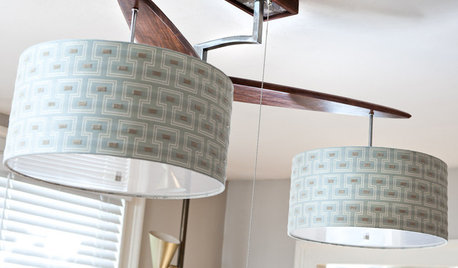short in wiring
plato319
11 years ago
Related Stories

MOVING5 Risks in Buying a Short-Sale Home — and How to Handle Them
Don’t let the lure of a great deal blind you to the hidden costs and issues in snagging a short-sale property
Full Story
Extend Window Design Solutions With Short Curtain Rods
Full-length curtain rods too bulky for your room? Opt for the abridged version instead
Full Story
TASTEMAKERSTastemakers: Talents Shine in New Lighting Designs
Inside Inspired Wire Studio, she says "Wouldn't it be cool if...?" and he makes it come to life
Full Story
LIFE10 Best Ways to Get Organized for a Big Move
Make your next move smooth, short and sweet with these tips for preparing, organizing and packing
Full Story
WINDOWSSalvage Spotlight: Warehouse Windows Become a Storage Screen
Full of character but originally short on practicality, these panes in a Brooklyn loft now hide gear instead of leaking air
Full Story
PRODUCT PICKSGuest Picks: Whip Up a 'Little Paris Kitchen' of Your Own
Get a kitchen that's big on flavor and short on excess, with accessories and tools inspired by the BBC show and cookbook
Full Story
REMODELING GUIDESContractor Tips: 5 Easy Ways to Get a Greener Home
Forget a fleet of solar panels (for now). These ideas can make your home a whole lot greener when money or time is in short supply
Full Story
DIY PROJECTSHow to Fix Up a Thrifted Lamp
Save money and earn DIY cred by rewiring and snazzing up a damaged lamp you scored on the cheap
Full Story
LIGHTINGWhat to Consider When Lighting Your Home
A designer offers a few illuminating insights on this key design element
Full Story
GARDENING AND LANDSCAPINGAlmost Invisible Outdoor Furniture Lets Views Star
No less stylish for all its modesty, barely there furniture for gardens, patios and decks is designed to offer a clear view of the landscape
Full StoryMore Discussions









bus_driver
plato319Original Author
Related Professionals
Delhi Electricians · Sierra Madre Electricians · Cibolo General Contractors · Galena Park General Contractors · Canandaigua General Contractors · Cedar Hill General Contractors · Chicago Ridge General Contractors · Florida City General Contractors · Kyle General Contractors · Lincoln General Contractors · Palestine General Contractors · Renton General Contractors · Sauk Village General Contractors · Glen Avon Solar Energy Systems · Silver Spring Home Automation & Home Mediabus_driver
dan1554
brickeyee
btharmy
brickeyee
plato319Original Author
yosemitebill
Ron Natalie
plato319Original Author
Ron Natalie
brickeyee
mike_kaiser_gw
plato319Original Author
Ron Natalie
plato319Original Author
Ron Natalie
bus_driver
alan_s_thefirst
plato319Original Author
weedmeister
Ron Natalie
plato319Original Author
btharmy
alan_s_thefirst